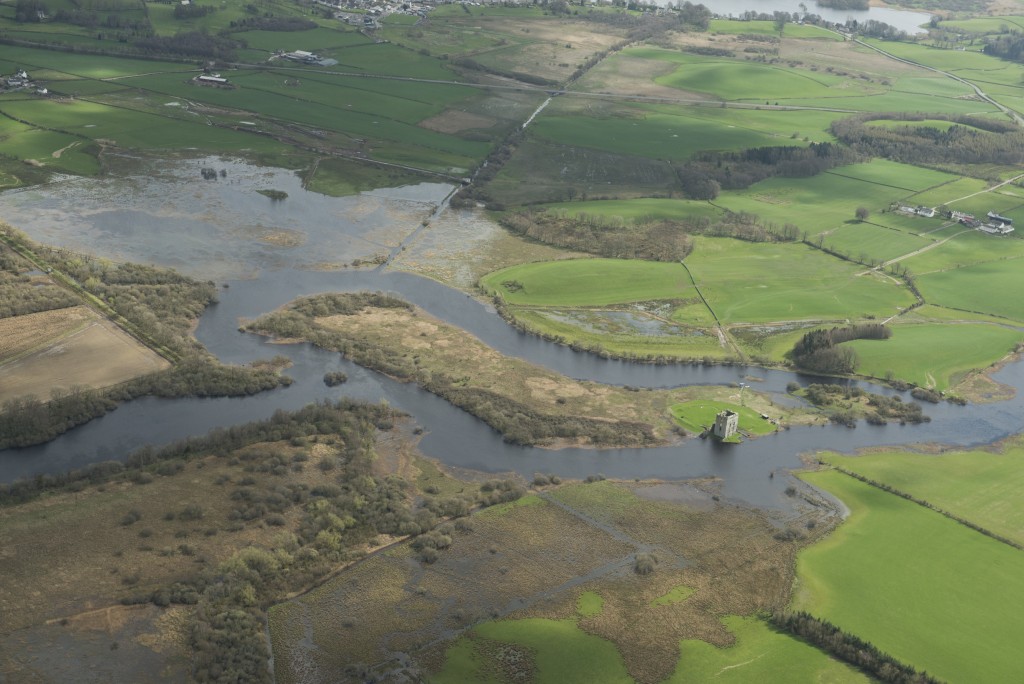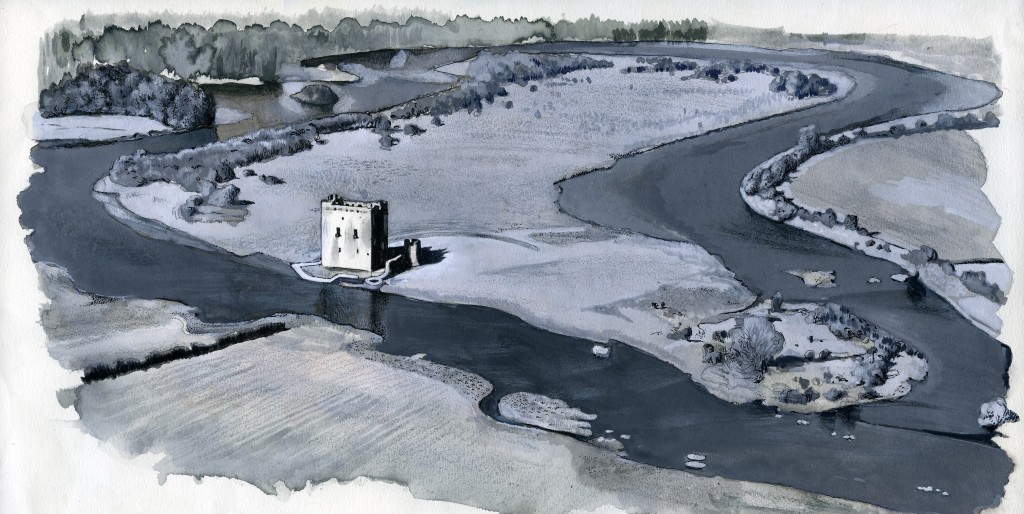The very nature of the sites we care for, and the needs of the people who constructed them in past times, means that many are located in exposed areas, including those susceptible to flooding.
With recent record rainfall events, and flooding occurring across the country, now more than ever it is important to consider and evaluate the risk posed to historic sites from this natural hazard.
In the past, being close to a water source had huge benefits with respect to transport links, strategic defence requirements, provision of water for domestic and agricultural needs, as well as in the powering of many industries.
Nevertheless, our ancestors had a good eye for reading the landscape and it is often the case that historic sites remain unaffected by flooding directly, as they have been constructed on topographic highs or by using materials (and implementing building practices) that can tolerate a certain degree of saturation.

Flooding in 2014 of the River Dee surrounding Threave Castle (centre right), which remained unaffected by the flooding (© Crown Copyright – Historic Environment Scotland).
Flood-Proofing Measures
However, many buildings and sites of historic significance are at direct risk from flooding. This is due, in some cases, to alterations that humans have made to the environment and landscape, e.g. the construction of impermeable road and paving surfaces, which can increase the risk of surface water flooding.
It is therefore important to consider a range of ‘flood-proofing’ methods, to help mitigate against the negative consequences of a flooding event.
Our INFORM guide, ‘Flood Damage to Traditional Buildings’ is full of useful guidance for managers and owners of historic properties. It includes ways of preventing water inundation into properties as well offering guidance on dealing with the aftermath of a flood. These methods of adapting properties to better deal with flooding, are perhaps more beneficial than trying to mitigate the hazard itself.
With respect to future planning, it seems relevant to think about how we can adapt methods and building practices, used by our ancestors.
They embedded resilience against natural hazards into the skills, design and materials used in the construction of many of their buildings; a legacy that is still evident in the historic landscape today.

Artist’s bird’s-eye view of Threave Castle from the south-west (© Historic Environment Scotland).
Threave Castle – An example of resilience
Located on a small island in the River Dee flood plain, Threave Castle is a great, 30 metre tall tower house built in 1369, with the island itself supporting a population of up to 150 people at its peak occupation.
The tower was five-storeys tall, with the lower levels used for storage and service accommodation, keeping the private accommodation out of reach of any possible flood waters on higher levels.
The River Dee acted as a means of defence, covering all approaches, as well as providing the main transportation route to and from the island – which had its own harbour.
Today, the castle structure still stands tall, despite centuries exposed to varying natural hazards, including flooding, which as recently as 2014 inundated the land around the castle.
Due in part to the foresight of our ancestors, to carefully select suitable sites for construction and an understanding of good building practices, the Castle remained unaffected by the rising flood waters.

